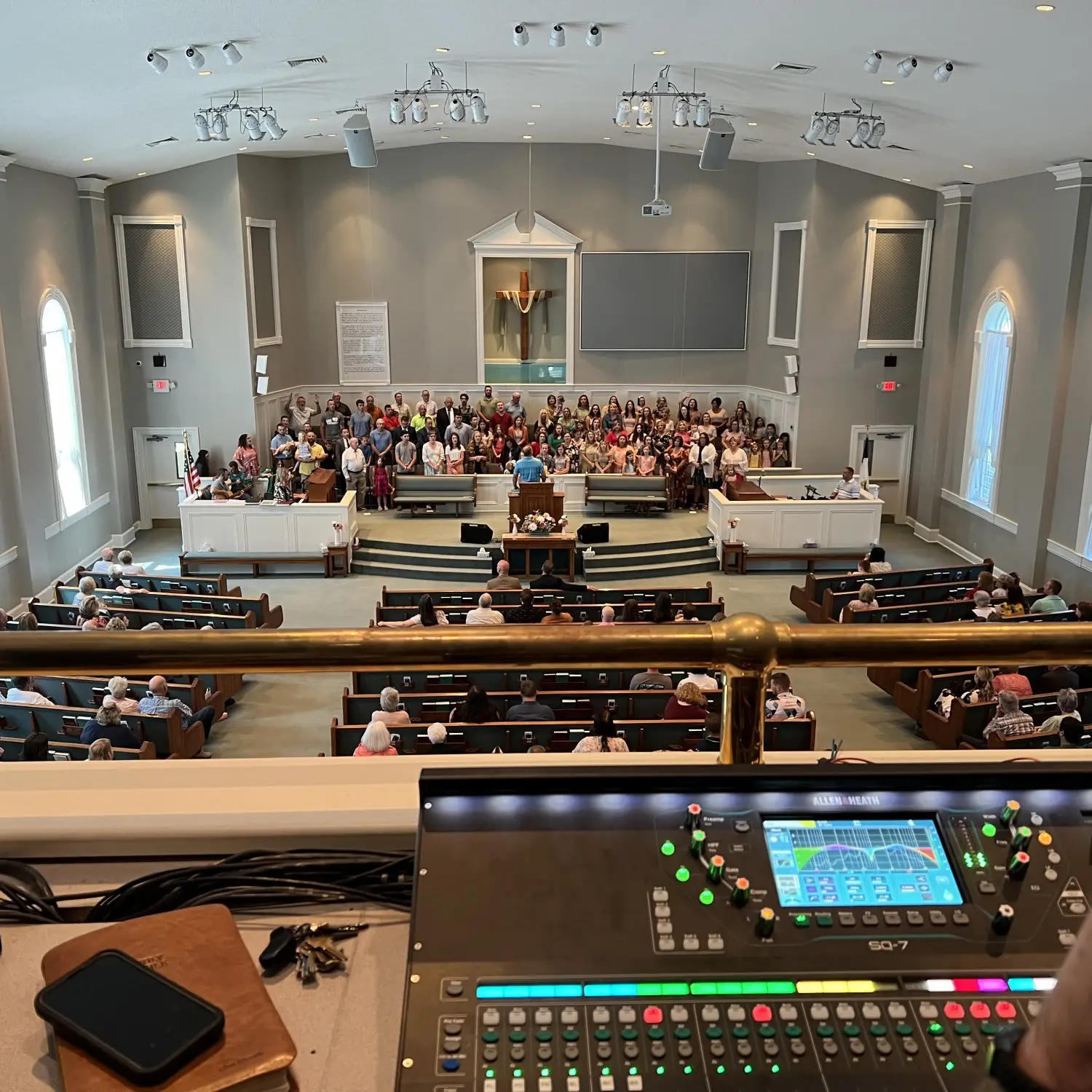AV Equipment
Acoustic treatment

How acoustic treatment makes a difference
Acoustic treatment enhances sound quality by reducing unwanted echoes, controlling reverberation, and balancing sound distribution in professional settings. Unlike soundproofing, which blocks sound from entering or leaving a room, acoustic treatment improves the clarity and quality of sound within the space. This makes it essential in environments where clear, focused audio is critical.

Key benefits of acoustic treatment
Enhanced Sound Clarity: Reduce echoes and control reverberation, ensuring that speech and audio are clear and intelligible throughout the space.
Improved Focus and Engagement: Minimize distractions caused by excess noise, helping audiences stay focused and fully engaged.
Customizable for Any Space: Acoustic treatment solutions are adaptable to the layout and needs of each room, serving both small and large environments.
Professional, Polished Environment: Well-designed acoustic environments provide a high-quality atmosphere and an improved experience.
Make your AV goals a reality—contact us today
Connect with our team to explore solutions tailored to your needs. Whether planning a new installation, upgrading an existing system, or seeking expert advice, we’re here to help you achieve seamless, high-impact performance.
Types of acoustic treatment we offer
We provide a range of acoustic treatments designed to optimize sound quality in professional spaces. Each type of treatment serves a unique purpose, helping to control reverberation, enhance clarity, and improve the overall auditory experience for your audience.
Acoustic Panels: Our panels absorb sound to reduce echo and reverberation, enhancing clarity throughout the room. They’re ideal for spaces where clear speech and music quality are essential, such as conference rooms, auditoriums, and boardrooms.
Bass Traps: Bass traps are designed to control low-frequency sound waves and help balance sound in larger spaces, especially where deeper audio frequencies are common. They are instrumental in venues with amplified sound, ensuring that bass frequencies don’t overwhelm other sounds.
Diffusers: Diffusers scatter sound waves evenly across a room to prevent excessive buildup of sound in certain areas. This helps create a balanced listening experience, making them ideal for lecture halls, auditoriums, and other spaces where natural sound distribution is needed.
Ceiling and Wall Treatments: Specialized ceiling and wall treatments help manage sound reflections from surfaces, especially in large, open spaces with hard surfaces. These treatments enhance the sound experience by minimizing echoes and providing consistent audio across the room.

Consult
Design
Implement
We keep AV integration simple
Managing an AV project can be complex, but our streamlined process ensures a smooth experience. We stay focused and on task with three key steps:

Solutions tailored to different audiences
AV services we provide
Explore our wide range of professional AV services, from initial consultation to installation and support, designed to bring your vision to life.
Locations we serve
Find out how our team serves businesses and organizations in your area, providing local expertise and support.
Have questions? We have answers.
If you need more information, don’t hesitate to reach out—our team is happy to assist.
Acoustic treatment improves sound quality within a space by managing echoes, reverberation, and sound reflections. In contrast, soundproofing prevents sound from entering or leaving a room. Treatments focus on enhancing internal sound clarity, while soundproofing aims to isolate sound.
Common signs a room could benefit from sound optimization include echoing, poor clarity, and distractions from excess noise reflections. Sound treatments can make a big difference in overall clarity and focus if people struggle to hear presentations or if audio quality feels lacking.
Our team can install panels, bass traps, and diffusers on existing walls and ceilings with minimal disruption. These options are designed to be adaptable to a range of spaces, even those already fully built or in daily use.
The amount and type of sound treatment depend on room size, layout, surface materials, and use. Our team evaluates these factors during an assessment to recommend the ideal balance for optimal sound quality.
Most sound treatments require minimal upkeep, but periodic checks help ensure they remain securely in place and effective. Some materials may need occasional cleaning or adjustments, especially in high-traffic areas. RYGID AV offers support to keep your sound treatments performing their best.
Where to Contact + Connect with RYGID AV
Mooresville, NC 28117







